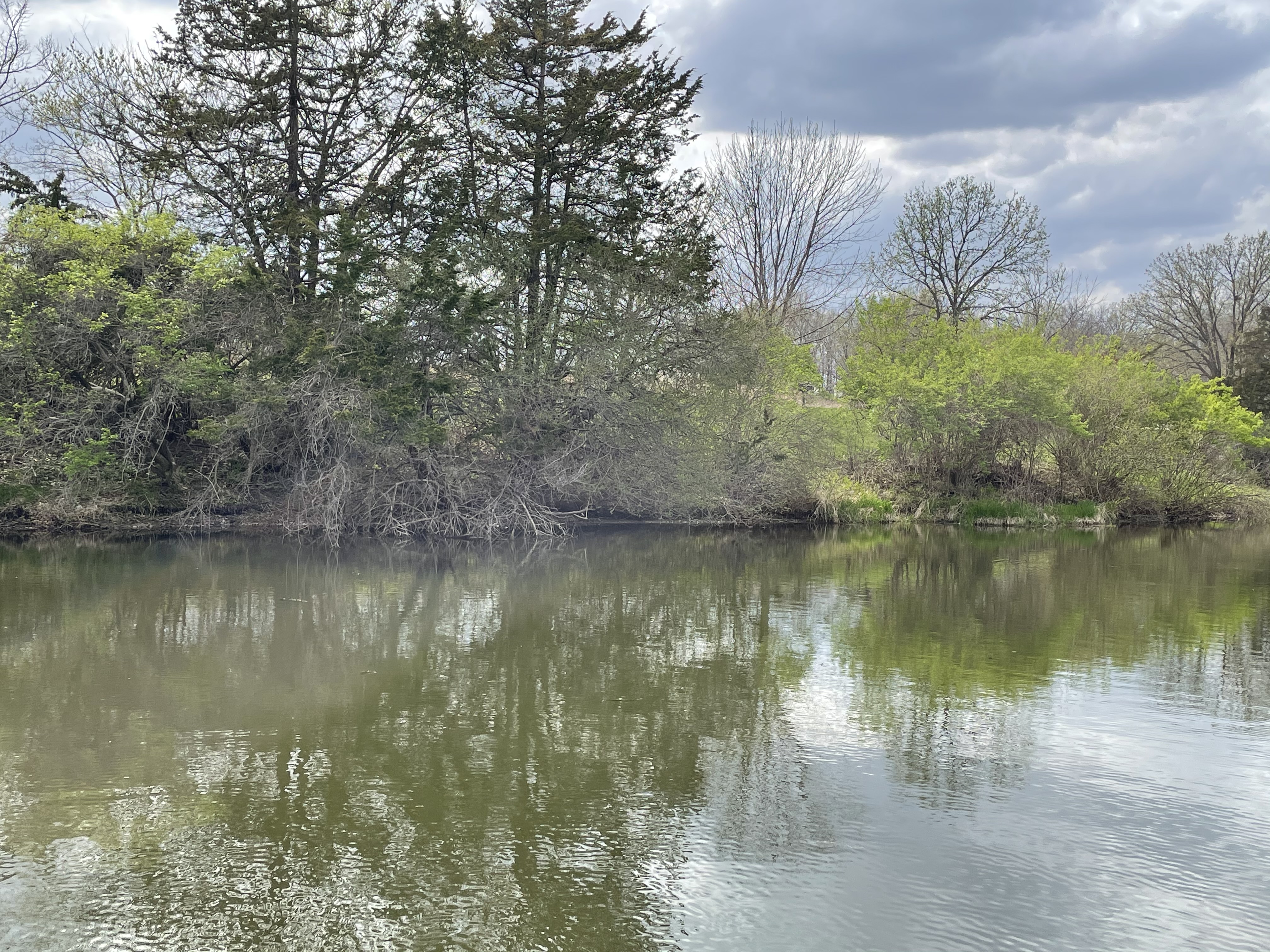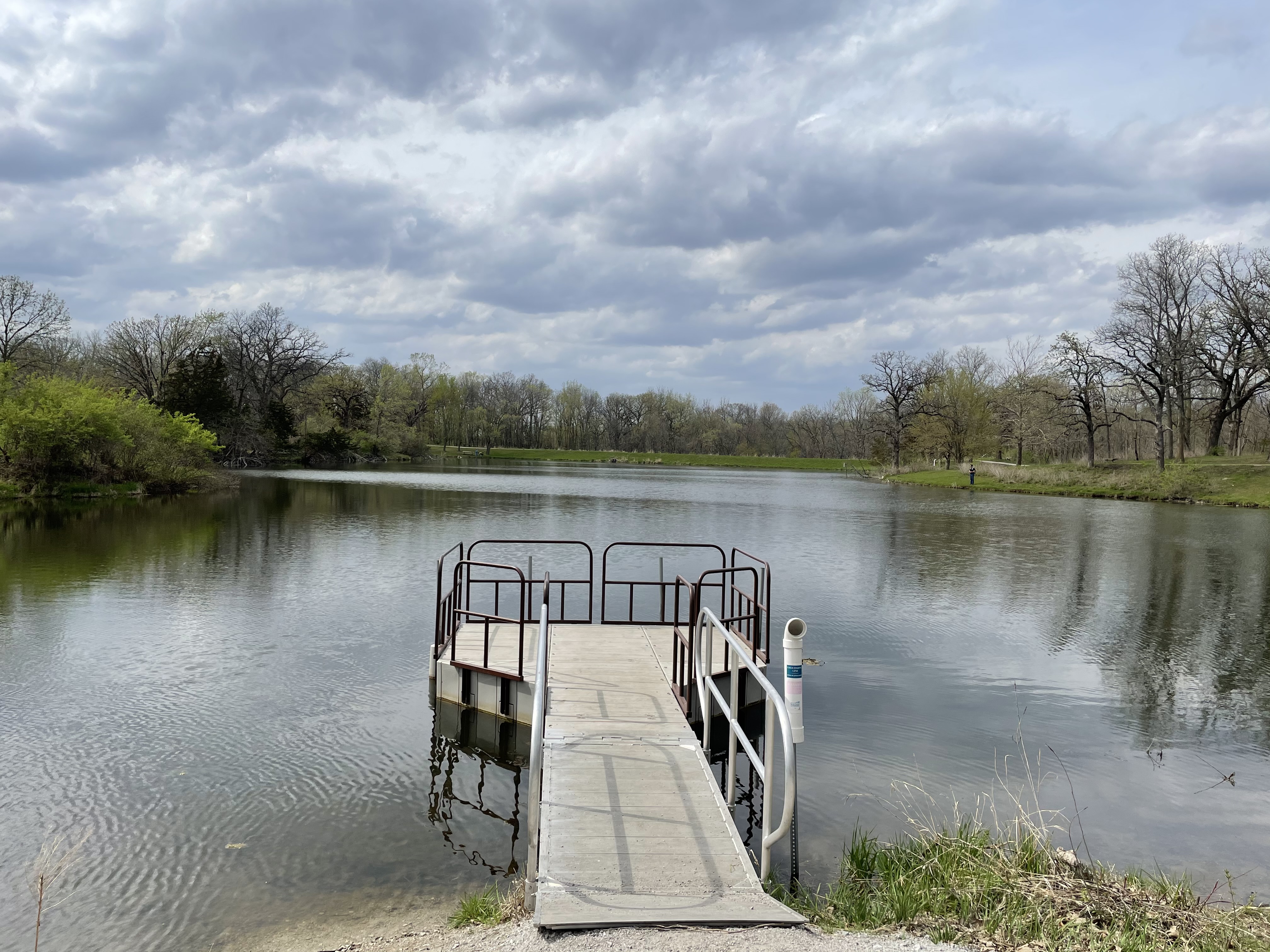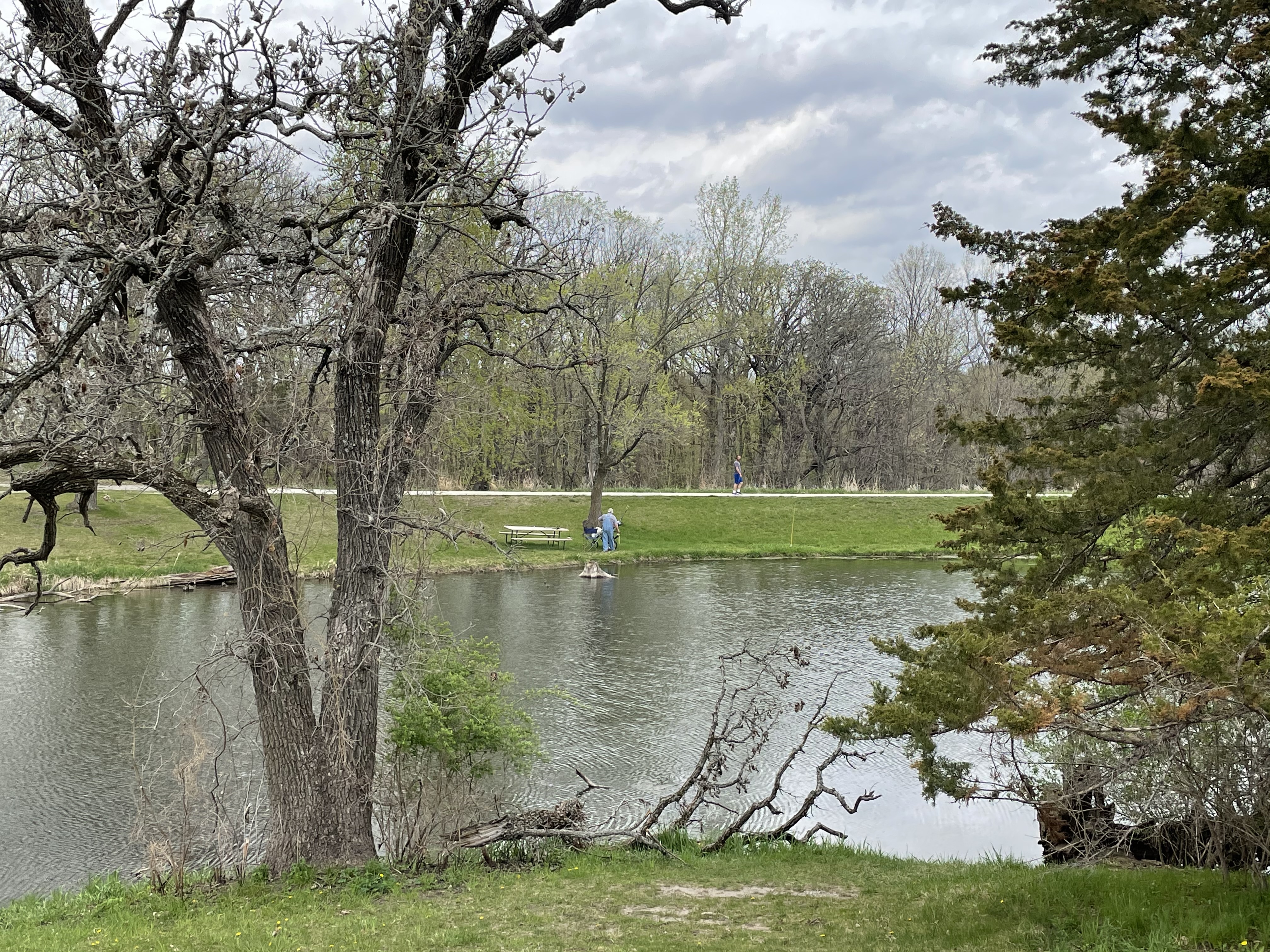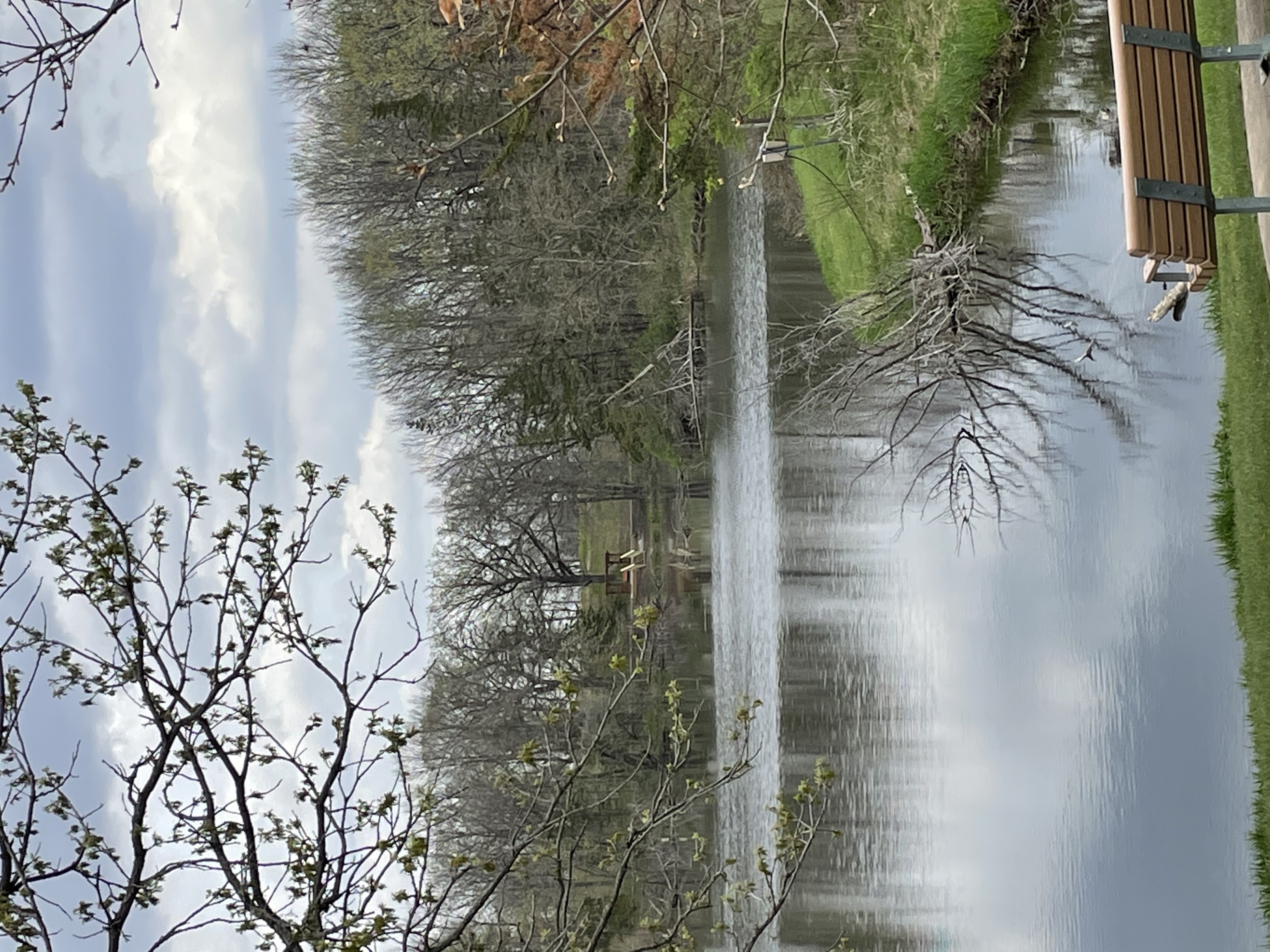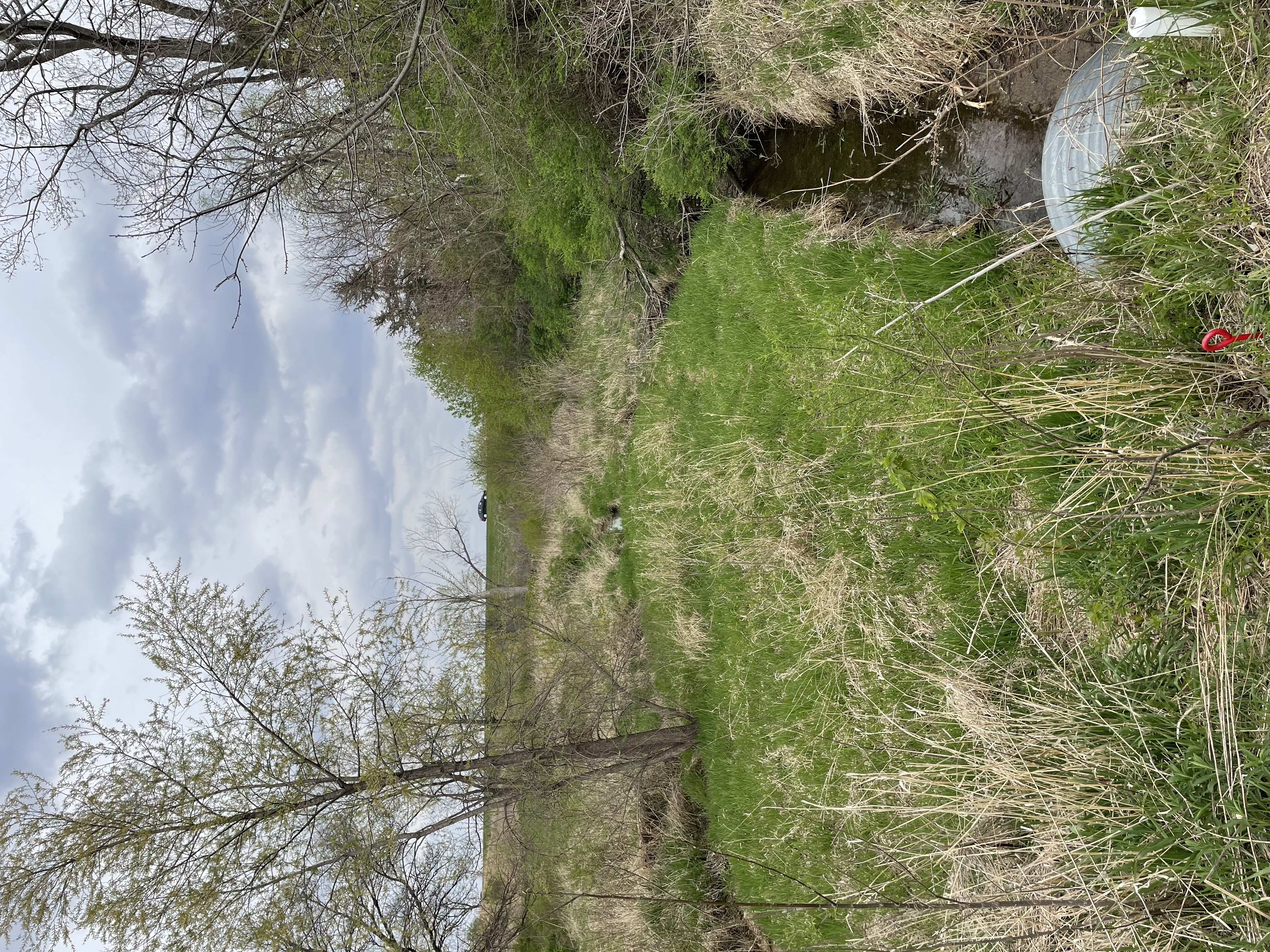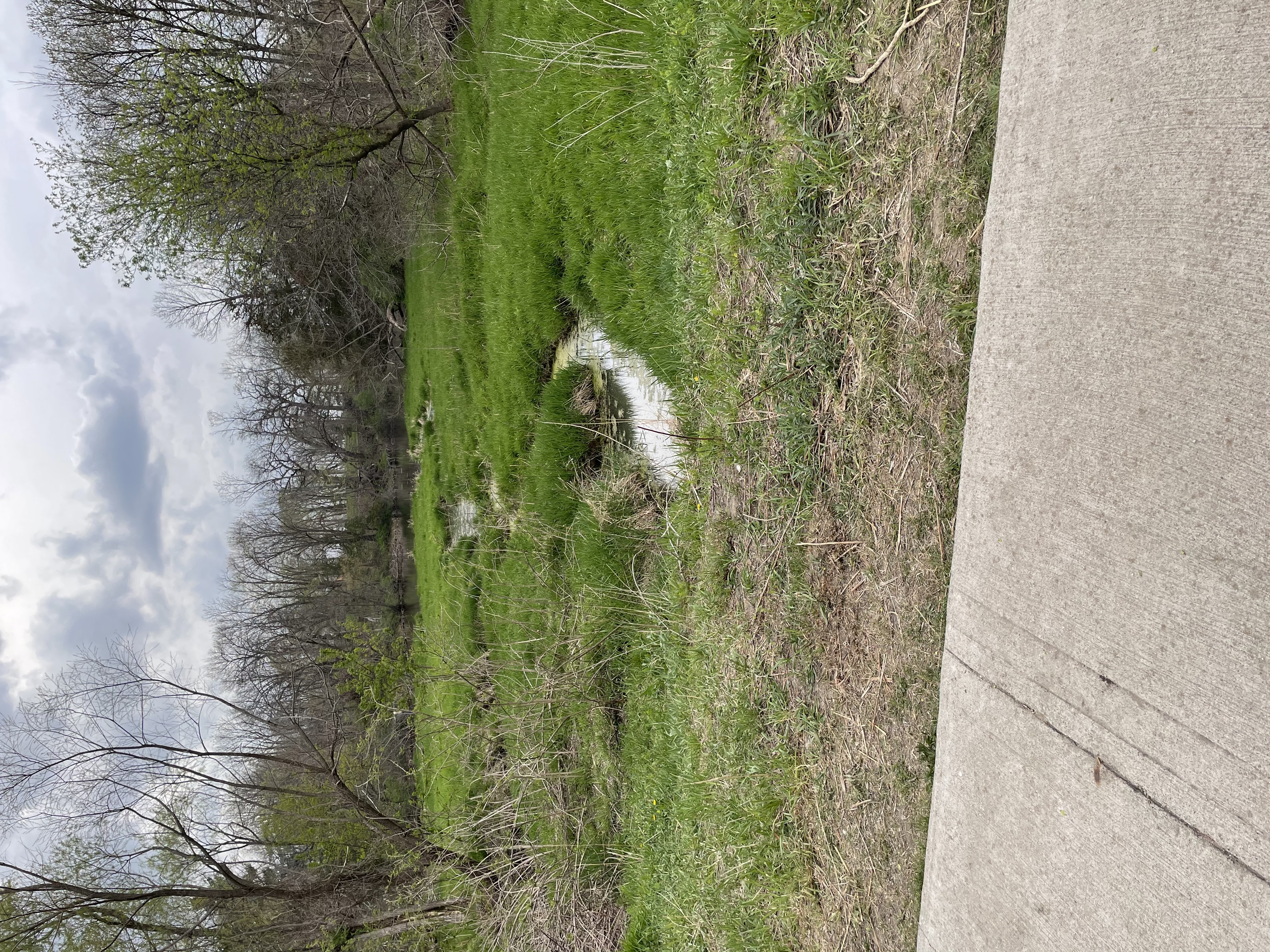| Entry ID | 1995 |
|---|
| Name of Applicant Organization (if applicable) | Story County Conservation |
|---|
| Address of Applicant Organization | 56461 180th Street
Ames, IA 50010-9451
Map It |
|---|
| Project Leader | Patrick Shehan |
|---|
| Project Leader Address | 56461 180th Street
Ames 50010-9451
Map It |
|---|
| Project Leader Phone | (515) 598-4771 |
|---|
| Project Leader Email | Email hidden; Javascript is required. |
|---|
| FOR Member/Group Sponsoring the Project | Ames Anglers |
|---|
| Reservoir Name | McFarland Lake |
|---|
| Project Title | McFarland Lake Restoration |
|---|
| Google Maps Location | 42.09430620289846, -93.57028226868806 |
|---|
| Map of Reservoir (Required) | 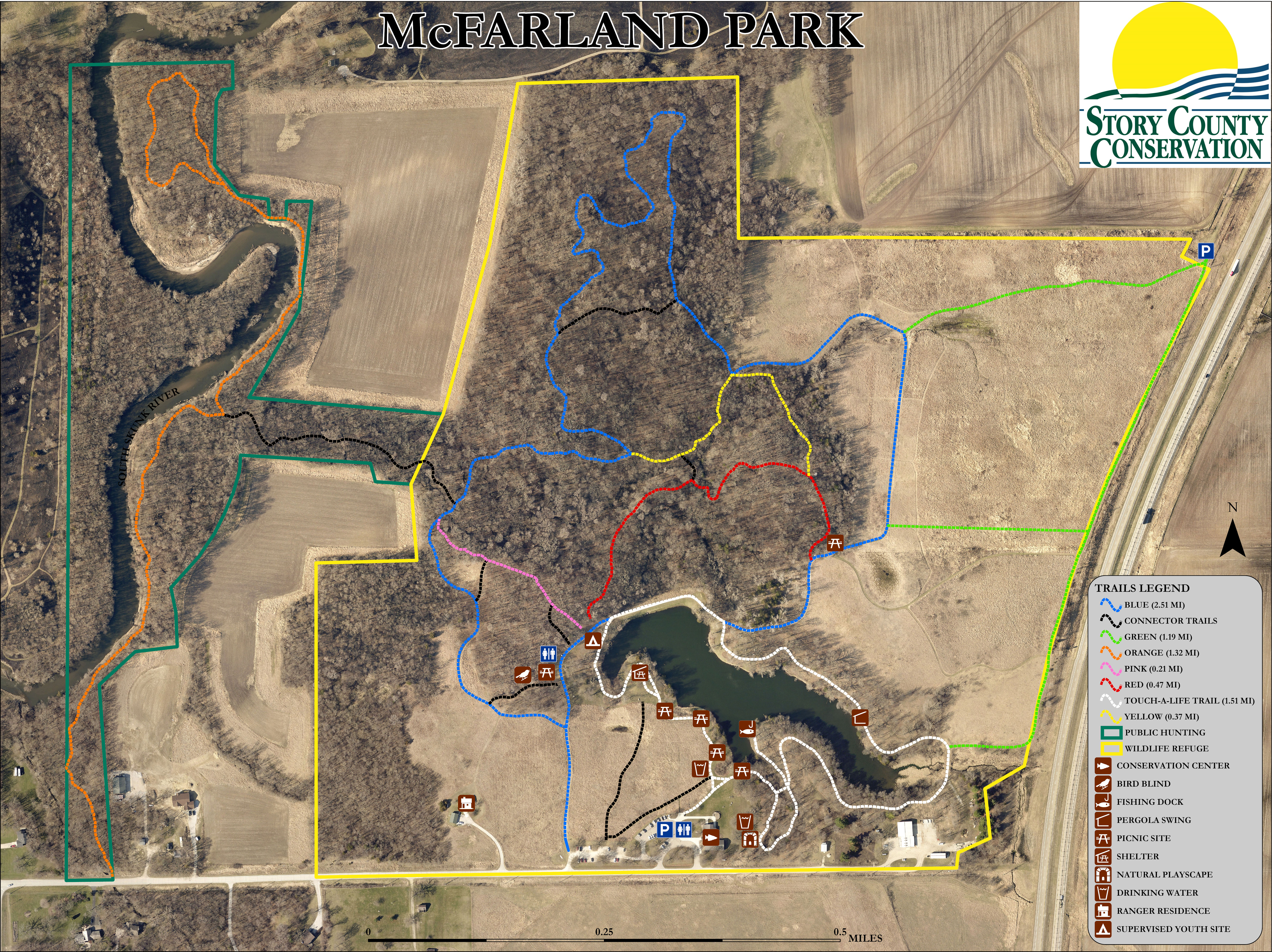 |
|---|
| In which region is the reservoir located? | Temperate Plains (TPL) |
|---|
| U.S. Congressional District | Iowa 4 |
|---|
| Project Objectives | • Implement in-lake restoration to mechanically remove excess sediment and phosphorus.
• Reduce sediment delivery from the lake shoreline through shoreline stabilization, prioritizing the worst eroding banks.
• Install sediment retention solutions for water entering the east entry points of the lake.
• Install drain pipe that allows full lake drawdown for mechanical dredging activities and to provide the ability to better manage the fishery and lake vegetation in the future.
• Improve outdoor recreational opportunities for park users; such as improved lake access, enhanced angling experiences, and environmental education.
• Installation of lake appropriate fish structures.
• Raise the pool level of the lake to increase depth and capacity.
|
|---|
| Priority Impairments addressed by the project: | - Point source pollution
- Nonpoint source pollution
- Excessive nutrients
- Algae blooms
- Siltation
- Mudflats/shallowness
- Limited connectivity
- Limited littoral structure
- Nuisance species
|
|---|
| Target Fish Species addressed by the project: | - Largemouth Bass, Catfish, Crappie, Sunfish
|
|---|
| On-the-ground Start Date | 06/01/2023 |
|---|
| On-the-ground End Date | 12/20/2024 |
|---|
| Amount of Grant Request | $75,000 |
|---|
| Amount of Non-Federal Funding | $1,042,054.50 |
|---|
| Total Estimated Project Cost | $1,117,324.50 |
|---|
| Project Overview | This lake was constructed in 1947 and raised in 1966 but has had no major renovation since then. There is no identified creek which leads into this lake, only one Story County Drainage District tile and two Iowa Department of Transportation tile fed box culverts that drain into the lake. McFarland Park (Lake) sees high traffic as this park sits 4 miles from the City of Ames, home of Iowa State University (ISU). ISU classes and students often participate in outdoor studies as well as recreation at this high use park. McFarland Park is also home to operations for Story County Conservation (SCC) and houses numerous public and school programs as well as nature camps at this location. McFarland Park also has over 8 miles of forest and prairie trails (with wayfinding signage) and a 1.25-mile handicap accessible paved trail around the lake, known as the Touch-A-Life Trail (TAL). This TAL Trail around the lake has amenities surrounding it such as: A shelter house, drinking fountain with dog station, several picnicking areas with grills, benches that overlook the lake, a pergola swing, three foot-bridges, and a unique natural playscape area.
The existing fishery is lacking in quality for the amount of fishing pressure it receives from the public. A complete fishery renovation is required to remove grass carp that contribute to soil stratification in the water. Furthermore, invasive vegetation, specifically coontail and duckweed, dominate the lake seasonally. Invasive Chinese Mystery Snails (apple snails) also are overly abundant in the lake. This combination of effects, along with sediment and phosphorus loading in the lake, make a renovation necessary to provide a quality fishery to meet the publics need. Siltation over the years has made the lake shallow in many places that increase vegetation limiting fishery quality and fishing access. Deepening of the lake to historic depths, and adding additional structure, will greatly boost the quality of the lake.
SCC has completed a Water Quality Assessment (WQA) with ISU’s Water Quality Lab - Dr. Michelle Suiper and team - as well as a Watershed Management Plan (WMP). This Lake Restoration is the major step towards completing the WMP. These two projects will help guide SCC on the lake restoration plan’s goals and objectives. Also as part of the WMP, the main phosphorus contributor to McFarland Lake is through sediment loading from an agriculture field to the east of Interstate 35. The landowner of this piece is currently exploring the options for constructing a CREP wetland, which will even further protect McFarland Lake moving forward. Furthermore, the lakes east end will act as a sediment basin from the main lake. The majority of the remaining watershed is owned by SCC and partners and is in native vegetation.
This projects number one objective is to improve water quality of McFarland Lake. Once the lake restoration is complete, a sustainable fishery will be managed through SCC and the IDNR. Lakes that meet the standard for sustainable fishing are well-managed and more prepared for climate change. These fisheries have effective monitoring and management in place to reduce their impacts on the environment and only catch what is sustainable. These fisheries show that it is possible to prioritize mitigations against environmental challenges.
It is estimated that over 57,000 CY of sediment will be removed from the lake, restoring it to its 7.5-acre original size. The lake currently sits at 6.4 acres after many inlets have filled in with sedimentation. Implementation of various types of natural and manipulated methods for fish habitat structure will be utilized. Pallet structures, vertical and horizontal cedar tree structures, tube structures for catfish hotels, lake edge benches for pea gravel spawning beds, and the addition of shoreline fishing nodes for better angling access are items that will be included into the lake restoration. Each habitat item will directly correlate to a specific fish species to promote diversity and sustainable population dynamics.
SCC plans to promote enhanced lake access through an added fishing jetty, improved dock location and a zero-grade access point for paddlers and educational groups exploring the water. We will better connect users with the water through education and interactions, as we believe this is the best way to get community investment into water quality improvements.
|
|---|
| Project Methods | The approved contractor or engineer will obtain all necessary permits and studies for the entirety of the project including, but not limited to, Wetland Delineations, IDNR Dam Safety permits and the IDNR/USACE 404 Permit before work has commenced. Mechanical dredging of the lake will be used to remove approximately 57,000 CY of sediment from the lake. This sediment removal will also remove a major source of the phosphorus from the lake. Over 1,200 linear feet of shoreline will stabilized in the most critical areas, reducing sediment loading. The east basin will act as a sediment basin for water entering the lake and will allow natural filtering of sediment and nutrients before water enters the main lake. Full lake drawdown capabilities allow managers to dictate lake levels to manage vegetation, the fishery and associated items. SCC will create and install a wide variety of fish structures throughout the lake as it did throughout the restoration of Hickory Grove Lake and Dakins Lake in Story County. These include 5 pea gravel spawning benches along with 4 fishing nodes, zero access point for canoes and kayaks and a fishing jetty. Local clubs and youth organizations will be asked to help in this process. In particular, the Iowa State University Fishing Club has stated they will help create and place fish habitat such as pallet structures. These partnerships allow service to our organization’s projects and an opportunity to educate the volunteers on fishery management and an investment to water quality. For shoreline stabilization, the remaining 25% of forested area around the lake will have undesirable trees cut to allow increased sunlight along the south shore of the lake, increasing deep-rooted native vegetation and reducing erosion.
The IDNR will monitor fish populations through sampling and will work with SCC to make the necessary adjustments to keep a sustainable fishery. Creel surveys will allow SCC to gather user information to see where users are from, what they are catching, and gather recreational use counts at the park and lake in particular. SCC also has access to trail counters, which can measure usage at the park and help assign an economic value to the location. SCC has recently worked with ISU's CYBIZ labs to do use surveys to collect economic spending data at Dakins Lake and Hickory Grove Lake. CyBIZ labs developed formulas for this data to find economic impact at these locations. Once better visitor use numbers are collected, they will be inserted into these formulas and we will have a recently accurate representation of economic impact. SCC will use this information in future grants and to share the importance of outdoor recreation, water quality and public use to the economy.
Water quality testing will be implemented through staff and partners to monitor success of the project and compare data to pre-restoration. SCC will use this information to gauge the success of the project and tell our water quality story. This will be shared through outreach mechanisms such as our SCC website, quarterly newsletter, social media, and education and public programming. SCC also routinely hosts water quality site visits with conservation professionals, ISU students and staff, and civic groups. Water Quality is at the forefront of not only SCC’s mission, but also Story County in general. The BOS have adopted a water quality implementation plan and are working towards accomplishing the extensive project.
|
|---|
| Monitoring Plan | Phosphorus and sediment are the primary pollutants of concern in McFarland Lake. The water quality improvement efforts to address these pollutants require a combination of in-lake restoration and external source reduction. Long-term water quality monitoring in McFarland Lake and its contributing streams will be needed to ensure the success of meeting water quality goals in McFarland Lake. The water quality data should include total phosphorus and sediment concentrations observed under different weather conditions (e.g., different years, seasons, flow conditions). A quality assurance project plan (QAPP) should be developed to ensure consistency in water quality sampling and analysis techniques throughout the watershed improvement project.
The long-term water quality data allows the tracking of water quality trends, and informs if the conservation practices implemented in each phase have demonstrated positive water quality impacts. If conservation practices implemented in Phase 1 allow McFarland Lake to meet its water quality goal, the need to implement practices in Phase 2 can be reevaluated. In contrast, if the conservation practices implemented did not result in slight improvements in McFarland Lake water quality, a more aggressive package of conservation practices may be considered.
SCC continues commitment to water quality efforts in the county as we created and hired a full time Watershed Coordinator position in 2021 that will help efforts in this field. SCC will add McFarland Lake to the Story County Water Quality Monitoring Program (SCWQMP) to monitor the lakes condition pre and post renovation. This SCWQMP checks for items such as dissolved oxygen, pH, chloride, phosphate, nitrate/nitrite and transparency.
SCC plans on conducting Creel Surveys utilizing a stratified random roving survey at McFarland Lake in conjunction with our newly renovated Hickory Grove Lake for one or more summer and winter seasons. This survey will record the responses to questions such as angler effort, catch, satisfaction, trip expenditures, individual trip information, and perceptions of environmental and water quality. Each survey should provide not only recreational fishery catch and harvest information, but also estimates of the economic impact of the fishery. The results of this survey will be utilized in the future management of McFarland Lake and other possible restorations of SCC managed impoundments.
Funding for all additional monitoring efforts are not included in this grant and will be covered by SCC.
|
|---|
| Outreach Plan | More than half of the watershed is managed by private landowners/managers, and their actions are important in determining the water quality in McFarland Lake. Because the implementation of conservation practices is voluntary-based, the key to involving private entities is to first understand community perceptions, and then provide appropriate incentives and motivations for participation. To do so, SCC contacted and discussed the project’s private landowners to view active erosion in the watershed and educate them on solutions as well as the lake project. Furthermore, SCC put together a public survey (distributed on website, social media, to the surrounding landowners, and to the conservation email list-serve) to gauge the public’s priorities for the lake restoration. This information was compiled and will be used as guiding principles for the lake restoration construction design. This public outreach plan aims not only to inform but also to motivate and engage the landowners in the decision-making process.
Additionally, the Story County Conservation Center, as an educational conservation center, also can use the McFarland Lake watershed project as a case demonstration to promote water quality awareness in park visitors and Story County residents. Annually the Environmental Education unit conducts approximately 15 pond study programs for over 850 youth and 8 fishing (ice and open water) programs with over 200 contacts. In addition, we have free fishing poles available for check out and in a typical year around 5 youth groups, (approximately 85 youth) will use them at McFarland Park. SCC employs a full-time Outreach Coordinator and is certified as a Service Enterprise through Points of Light. A Service Enterprise is an organization that strategically leverages volunteers to achieve operational efficiency and greater social impact.
Goals:
Increase public awareness of water quality challenges, causes, and solutions in McFarland Lake.
Improve and maintain the water quality of McFarland Lake through the implementation of restoration and best management practices.
Outreach strategies:
General elements
Project identity – Develop an identity for the project that can be used consistently for all conservation efforts
One-stop information “booth” – Create and maintain a website containing all information related to the project. Information may include but is not limited to project background, progress, technical and financial assistance information, outreach materials, public event details, photos, and contact information.
Photography – Share photos that can be used to inform and educate the public. Photos may include McFarland Lake water quality conditions, conservation practices, and outreach events.
Recognition – Provide public recognition (with permission) to individuals and landowners who contributed to watershed improvement efforts.
Personal contacts
Personal meetings – Set up individual meetings with landowners/managers to obtain their perspectives on the project, and to share information that may lead to the implementation of conservation practices.
Direct mails or emails – Send quarterly postcards or newsletters to the landowners/managers to build relationships and create project awareness.
Outreach events
Field demonstrations – Invite landowners/managers who implemented conservation practices to share their perspectives to potential landowners/managers who might be interested in adopting conservation practices.
Park open days – Include educational components in park open days to create project awareness to all local landowners/managers, residents, and park visitors
Publicity efforts
News releases – Send quarterly news releases to media outlets, including local newspapers.
Social media presence – Create and maintain accounts on social media platforms, such as Twitter, Facebook, and YouTube. The platforms also allow interactions between public and project personnel.
Posters – Develop and put up posters around McFarland Park to raise awareness on water quality issues and causes in McFarland Lake.
Road signages – Develop and put up road signages near McFarland Park to raise awareness on water quality issues and causes in McFarland Lake.
Outreach success evaluation:
Attendance on public meetings and field days
Follow-up surveys after public meetings and field days
Follow-up phone calls with landowners/managers after private meetings
Media and social media coverage
Express of interest or implementation of conservation practices.
|
|---|
| Please list the project deliverables (with quantities whenever possible). | - • Improved fishery by reducing rough fish, restarting balanced populations, improving water quality. • Installation of a sediment forebay to catch sediment and nutrients before entering the lake. • Installation of 5 pea gravel spawning benches, 4 fishing nodes, zero-grade access point for canoes and kayaks and a fishing jetty. • Improved fishing accessibility and catch rate. • Increased water quality perception and engagement through improved water quality. • Reduce sedimentation loading in lake by 57,000 CY initially and 43.4 tons annually moving forward. • Reduce TP by 71% (or 152 pounds per year) load reduction to achieve the targeted water quality goal • Stabilize remaining 25% of shorelines (1200 LF) to reduce erosion. • Regain the lakes capacity from 6.4 acres to at least the original 7.5 acres, increasing the lakes holding capacity by 326K gallons or more.
|
|---|
| Will the project deliverables have an impact on potential climate effects on reservoir habitat conditions? | Yes |
|---|
| Will state agency staff be involved in the project? | Yes |
|---|
| State Agency Involvement | SCC will work closely with the Iowa Department of Resources (IDNR) regional Fisheries Biologist and supporting staff. Iowa DNR Lake Mapping Crew and well qualified engineer firm performed bathymetric surveys for McFarland Lake in May of 2021. SCC will also seek to partner with the Iowa DNR in the conducting of the Creel Survey for McFarland Lake once the restoration is completed.
Iowa State University was utilized for the Water Quality Assessment and Watershed Management Plan as well as with CyBIZ Labs for economic evaluation. These groups will continue to work side by side with SCC for post renovation evaluations. SCC management plans for McFarland Park have suggested aquatic management for this lake dating all the way back to 1981. Suggested practices include: aeration, shoreline stabilization, in lake vegetation management, and fishery management (population and species balance, and improved structure). Structure was last placed in the lake in winter of 2018 in the form of pallet structures.
Coordination on sediment forebay expansion is ongoing with the Iowa Department of Transportation (IDOT) as McFarland Lake is bordered by Interstate 35 and has direct interactions through water runoff from the I-35 right of way. SCC and IDOT will continue collaboration for a forebay management agreement to ensure these best management practices are upheld.
|
|---|
| Agency Letters of Support and Plans | |
|---|
| Does the project involve one or more youth groups? | Yes |
|---|
| Please list all partners involved in the project: | | Partner Name |
Type of Partner (Federal, County, HOA, Club, etc.) |
Value Contributed ($) |
Type of Match: Cash? |
Type of Match: In-Kind? |
Source: Federal Funds? |
Source: Non-Federal Funds? |
|---|
| Story County |
County |
$700,000 |
X |
|
|
X |
|
|---|
| Some folks are having issues with the above table. If you have any issues whatsoever, please upload your partner list here. | Partnership-and-Budget.pdf |
|---|
| Budget Narrative | SCC has previously invested $26K into the WQA and WMP's from ISU's Water Quality group. In the last year SCC has contracted the services of a well-qualified engineer firm for this lake restoration design at a cost of $88,050.
This project is identified in the county’s Capital Improvement Plan (CIP) for FY23. The Story County Conservation Board has approved allocating $400,000 from the county’s general fund (with support from the Story County Board of Supervisors) and an additional $300,000 out of Conservation Reserve funds to pay for this project.
SCC is also continuing fundraising opportunities for this project. Numerous grants and partnerships are currently being pursued to help leverage funds for this project, specifically state and local grants. This is the only federal grant we are pursuing at this time. SCC has had past success with the IDNR fish habitat grants, received 4 grants in 4 attempts over the last 5 years. SCC plans to make that funding source a part of this project as well. Currently, the Ames Anglers have become a partner of the Friends of Reservoirs while SCC plans to join once the appropriate steps with meetings is completed. SCC will partner with the Iowa State University Fishing Club during the construction and placement of certain fish habitat structures. At this time, they have committed to having 5 club members work 3 hours in the construction of pallet structures to be installed into the lake. SCC hopes to expand on this partnership once the election of new officers of the club happens this spring. SCC has traditionally utilized youth groups or student groups in many of our lake restoration projects. Local youth groups such as Boy Scouts of America, Youth and Shelter Services, amongst others, will be contacted for their assistance in certain fish structure work.
|
|---|
| FiscalYear | 2023 |
|---|



